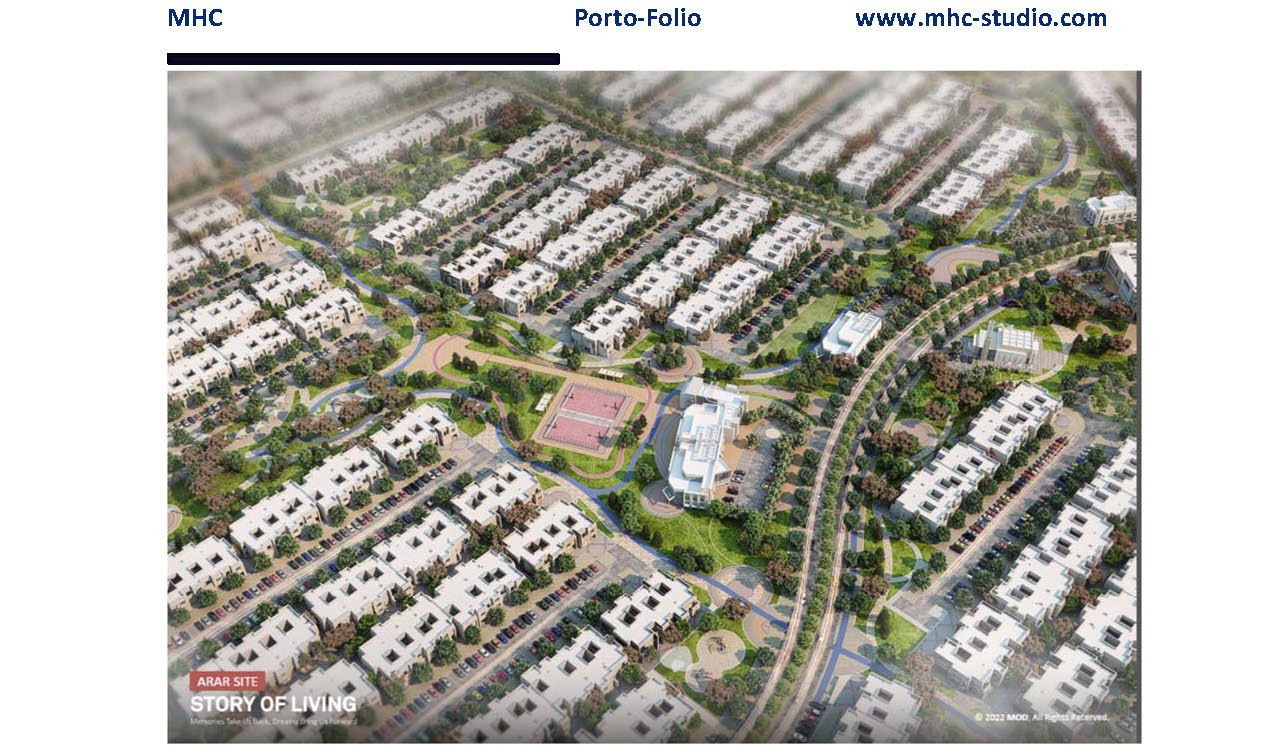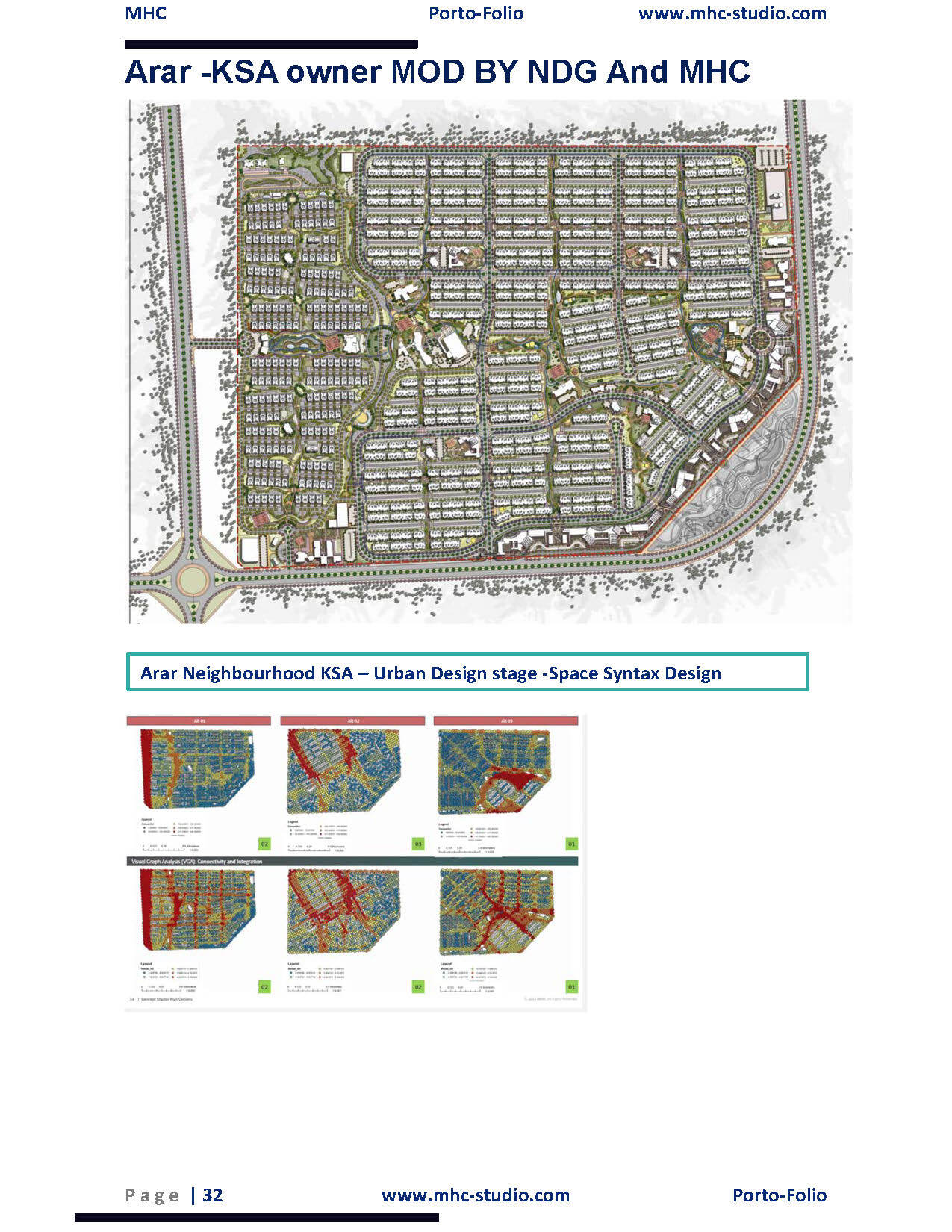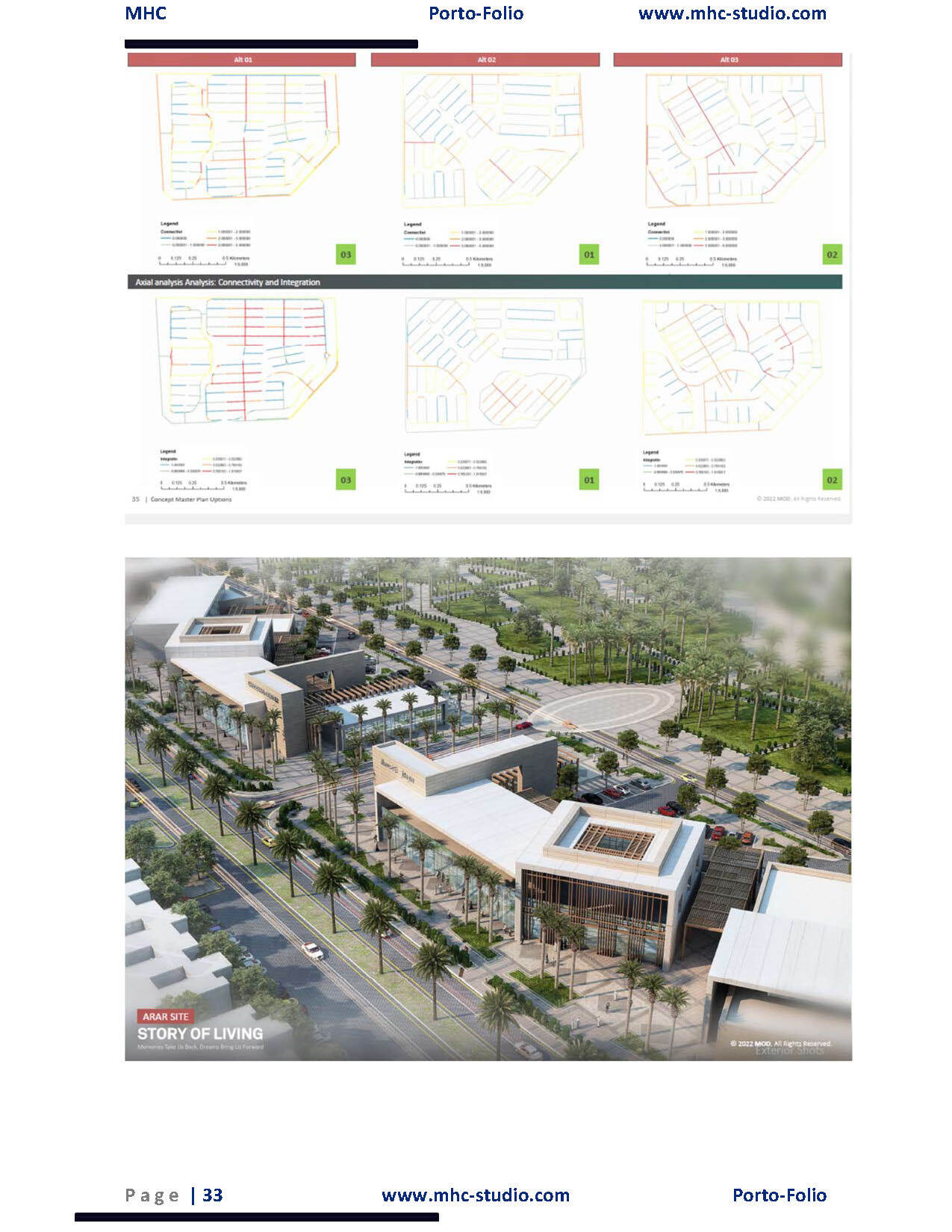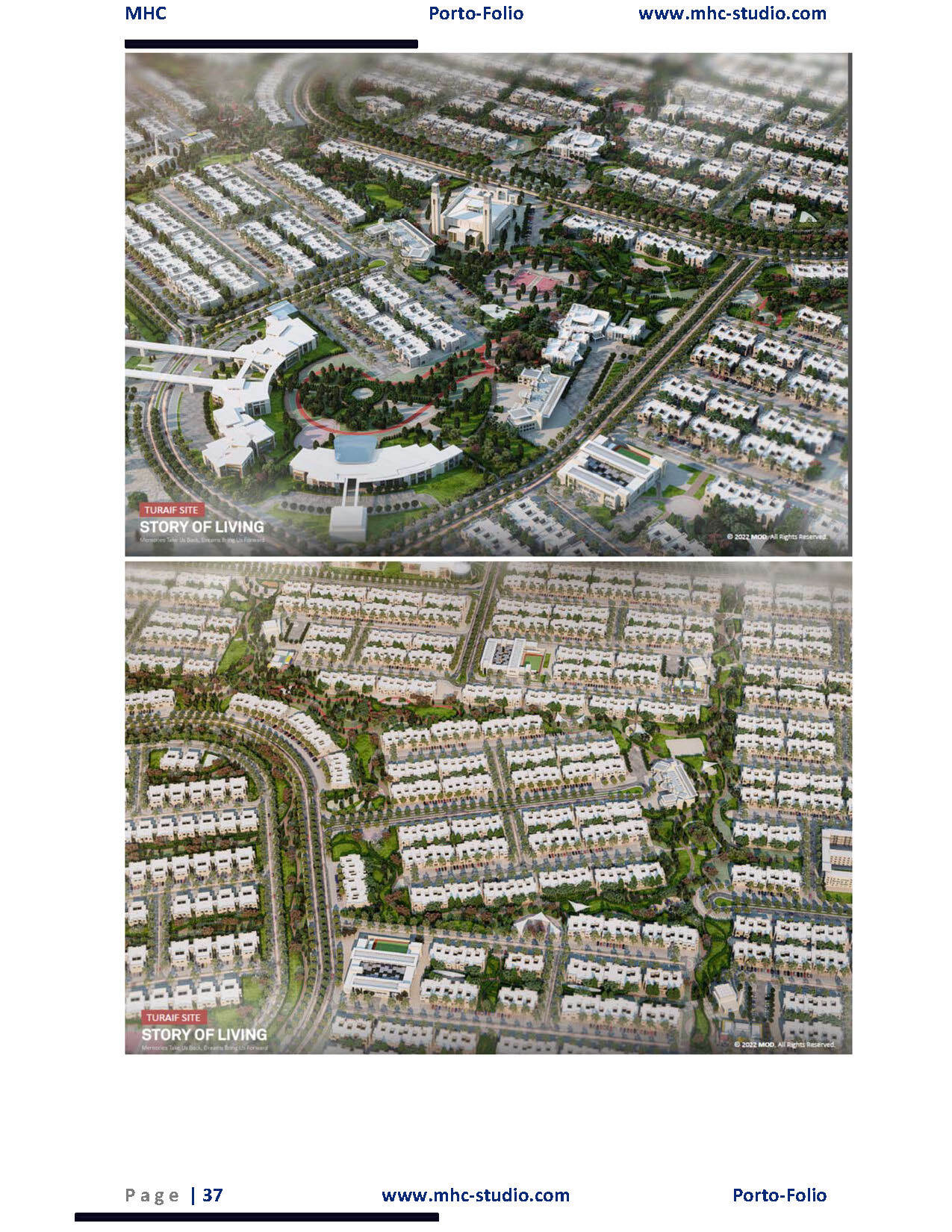the livability of urban form Arar -KSA

The livability of urban form refers to how well urban environments support the quality of life for their residents. This concept encompasses various factors, including accessibility, safety, environmental quality, social interaction, and economic opportunities. Here are some key aspects that contribute to the livability of urban form:
Key Aspects of Livable Urban Form
- Accessibility:
- Public Transportation: Efficient and reliable public transport systems make it easier for residents to commute and access essential services.
- Walkability: Well-designed pedestrian pathways and safe crossings encourage walking, reducing reliance on cars and promoting a healthier lifestyle.
- Safety:
- Crime Prevention: Urban design that includes good lighting, clear sightlines, and active public spaces can reduce crime and enhance safety.
- Traffic Safety: Properly designed streets and intersections can minimize accidents and ensure the safety of pedestrians and cyclists.
- Environmental Quality:
- Green Spaces: Parks, gardens, and green roofs improve air quality, provide recreational spaces, and enhance the aesthetic appeal of urban areas.
- Sustainable Design: Incorporating sustainable building practices and renewable energy sources reduces the environmental impact of urban development.
- Social Interaction:
- Public Spaces: Plazas, squares, and community centers foster social interaction and create a sense of community.
- Mixed-Use Development: Combining residential, commercial, and recreational spaces encourages diverse activities and interactions among residents.
- Economic Opportunities:
- Local Businesses: Supporting local businesses and markets creates job opportunities and stimulates the local economy.
- Affordable Housing: Providing a range of housing options ensures that people of different income levels can live in the city.
Example Projects
- High Line, New York City:
- This elevated linear park transformed a disused railway into a vibrant public space, enhancing walkability, providing green space, and fostering social interaction.
- Vauban, Freiburg, Germany:
- A sustainable urban district that prioritizes pedestrian and bicycle traffic, incorporates green building practices, and promotes community engagement.
- Copenhagen, Denmark:
- Known for its extensive cycling infrastructure, Copenhagen has created a highly livable urban environment by prioritizing sustainable transportation and green spaces.
Benefits of Livable Urban Form
- Improved Health: Access to green spaces and active transportation options promotes physical and mental well-being.
- Enhanced Social Cohesion: Public spaces and community-oriented design foster social connections and a sense of belonging.
- Economic Resilience: Diverse economic opportunities and local businesses contribute to a robust and resilient economy.
- Environmental Sustainability: Sustainable urban design practices reduce the environmental footprint and promote long-term ecological health.
By focusing on these aspects, urban planners and designers can create cities that are not only functional but also enjoyable and sustainable places to live.


Streets are a fundamental component of urban form and play a crucial role in the livability of cities. They are not just pathways for vehicles and pedestrians but also spaces for social interaction, commerce, and community activities. Here are some key aspects of streets that contribute to urban livability:
Key Aspects of Livable Streets
- Walkability:
- Wide Sidewalks: Providing ample space for pedestrians to walk comfortably.
- Safe Crossings: Well-marked crosswalks and pedestrian signals to ensure safety.
- Green Infrastructure:
- Street Trees: Planting trees along streets to provide shade, improve air quality, and enhance aesthetic appeal.
- Rain Gardens: Integrating rain gardens to manage stormwater and reduce flooding.
- Public Spaces:
- Plazas and Squares: Creating small public spaces along streets for people to gather, relax, and socialize.
- Street Furniture: Installing benches, bike racks, and other amenities to make streets more user-friendly.
- Mixed-Use Development:
- Retail and Services: Encouraging shops, cafes, and services at street level to create vibrant, active streetscapes.
- Residential Areas: Integrating residential units to ensure streets are lively at all times of the day.
- Traffic Calming Measures:
- Narrow Lanes: Reducing lane widths to slow down traffic and make streets safer for pedestrians and cyclists.
- Speed Bumps and Raised Crosswalks: Implementing physical measures to control vehicle speeds.
- Cycling Infrastructure:
- Bike Lanes: Providing dedicated lanes for cyclists to promote safe and efficient cycling.
- Bike Sharing Stations: Installing bike-sharing stations to encourage cycling as a mode of transport.
Example Projects
- Complete Streets Initiative, USA:
- This initiative promotes the design and operation of streets that are safe and accessible for all users, including pedestrians, cyclists, motorists, and transit riders.
- Superblocks, Barcelona:
- Barcelona's Superblocks project reconfigures city blocks to prioritize pedestrians and cyclists, creating car-free zones and enhancing public spaces.
- Green Streets, Portland, Oregon:
- Portland's Green Streets program integrates green infrastructure into street design to manage stormwater, improve water quality, and enhance urban livability.
Benefits of Livable Streets
- Improved Health: Encouraging walking and cycling promotes physical activity and reduces the risk of chronic diseases.
- Social Interaction: Well-designed streets provide spaces for people to meet, interact, and build community ties.
- Economic Growth: Vibrant streets attract businesses and customers, boosting local economies.
- Environmental Sustainability: Green infrastructure and reduced vehicle use contribute to lower emissions and a healthier environment.
By focusing on these aspects, urban planners and designers can create streets that are not only functional but also enjoyable and sustainable places to live.



